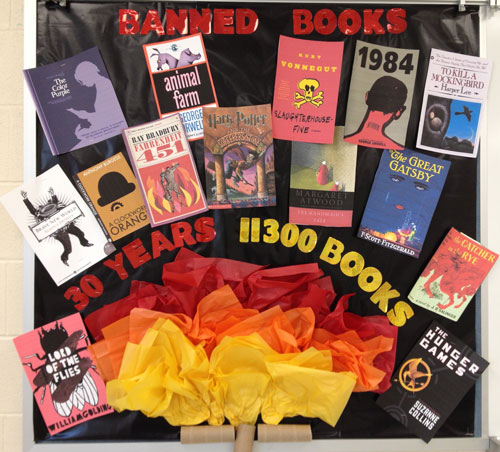Ray Bradbury’s Fahrenheit 451 is my favorite book to teach. It’s the reason I became a high school English teacher. Years ago when my teacher handed me that book, I was both engrossed and frightened to learn of a dystopian world in which books were not only illegal, they were burned.
I begin each year with Fahrenheit 451 because it gets students’ attention and helps us talk about major issues of justice and tolerance. The timing works out nicely because we generally finish reading it by Banned Books Week and talk about why books are banned in Bradbury’s fictional society and in our society. Fahrenheit 451 is a banned book.

This is Banned Books Week, an initiative of the national book community that celebrates banned and challenged books by asking people to read and talk about them. Since 1982, more than 11,300 books have been challenged community members who object to the subject matter contained in these books. Some books are challenged for religious reasons because of the inclusion of sorcery and witchcraft. Some make the list because of curse words or racial slurs. Others are challenged for their depiction of sexually explicit content.
Whatever the reason, during this week, we are all asked to fight back against censorship and celebrate the freedom to read.
In one of our final class discussions of Bradbury’s novel a student asked, “What does this have to teach us? No one is going around burning books. Sure, people are banning books from schools and libraries, but that’s not the same as burning them. If they don’t want to read the books, that’s their choice.”
Before I could respond, another student spoke out. “Bradbury himself said that there is more than one way to burn a book. Banning a book from schools and libraries fosters ignorance. Bradbury is trying to warn us that a society that allows books to be censored can easily turn into a society like the one in his book.”
I reminded students that just last year, a Florida pastor burned copies of the Quran. This launched us into a discussion about tolerance, censorship and book banning that I hope my students will remember for a long time.
This week my students decided to read a banned or challenged book from the list provided at the American Library Association website. They are all completing projects that relate to their chosen reading material. The projects are designed to spread the word about banned books.
Some of the most often banned books are classic novels such as Catcher in the Rye, Slaughterhouse-Five, To Kill a Mockingbird, Animal Farm, and Huckleberry Finn. These books all have much to teach us about diversity, tolerance and our past.
My class also created a bulletin board that depicts a fire and banned books escaping the flames. We hope to raise awareness about censorship and inspire students to read other banned or challenged books.
Personally, I will be reading George Orwell’s 1984 to celebrate the week. My students already read it in their English classes last year, but I’d never picked it up. My students are reading books like The Color Purple, Of Mice and Men, and The Great Gatsby and they are devouring every word. Hopefully, the excitement will continue beyond this week and throughout their lives.
Samsa is a freelance writer and teaches high school English in the south suburbs of Chicago.